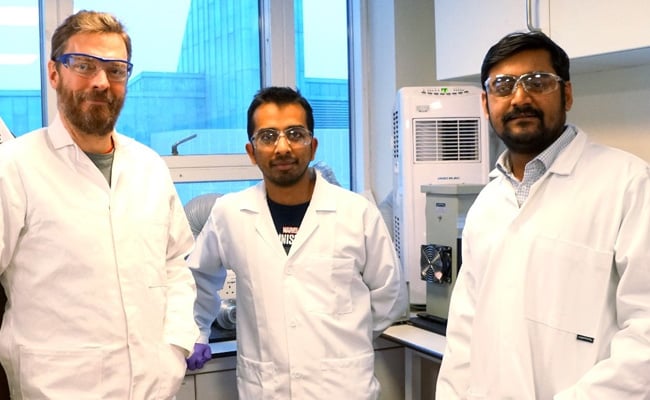In Breakthrough, 2 Indian Scientists Offer Answers To These Global Issues

The reactor runs solely on solar power and uses a light absorber based on perovskite
New Delhi:
In a first, two Indian researchers at Cambridge University have developed a system that can potentially resolve two of the biggest environmental challenges faced by the Earth – greenhouse gases and plastic waste – at the same time.
Under the supervision of professor Erwin Reisner at the Reisner Lab, which develops concepts and technologies for a sustainable future, researchers developed a reactor that converted greenhouse gases and plastic waste into sustainable fuels and other valuable products.
The results of the research have been published in Nature Synthesis.
The reactor runs solely on solar power and uses a light absorber based on perovskite – a material considered a cost-effective alternative to silicon to create solar cells.
“The reactor has two compartments. One compartment converts carbon dioxide while the other turns plastic waste into useful products,” Motiar Rahaman, the co-first author, told NDTV on phone.
Mr Rahaman said the reactor can help create products like syngas, formic acid and glycolic acid through the conversion of carbon dioxide and plastic waste.
The products mentioned by Mr Rahaman have industrial uses. Syngas is used to produce liquid fuels. Formic acid is used in leather and textile processing. Glycolic acid has major utility in the pharmaceutical sector, especially in skincare.
The reactor produced these products at a rate much higher than conventional photocatalytic carbon dioxide reduction processes, Cambridge University said in a statement.
Mr Rahaman told NDTV the key to the whole conversion process is the photoelectrodes, an important component of the reactor that contains catalyst material for converting waste.
Catalysts play a big role in speeding up chemical reactions. More importantly, they can produce entirely new material with new potential uses.
Buoyed by the positive results of the experiment, the researchers now plan to scale up their innovation.
“We’re making fairly simple carbon-based molecules right now. In future, we could be able to tune the system to make far more complex products just by changing the catalyst,” said Subhajit Bhattacharjee, another co-first author.
Mr Rahaman said they would stick with the basic science to scale up and all that they need are bigger electrodes and photosensitizers. Photosensitizers absorb sunlight and produce voltage that is useful to convert waste material – greenhouse gases and plastic.
However, large-scale perovskite solar cell manufacturing is a challenge at this moment, he said.
Panacea for climate crisis?
The researchers are hopeful that their innovation helps countries, especially developing ones, fight climate change.
“A solar-driven technology that could help to address plastic pollution and greenhouse gases at the same time could be a game-changer in the development of a circular economy,” Mr Bhattacharjee said.
Greenhouse gases trap the sun’s heat, which leads to global warming and climate change. Plastic pollution, as per the United Nations, can alter habitats and natural processes, reducing ecosystems’ ability to adapt to climate change. In many ways, plastics exacerbate the climate crisis.
According to a Stanford University study, climate change has increased economic inequality between developed and developing nations by 25 per cent since 1960.
The United Nations Conference on Trade and Development states that developing countries are already suffering relative economic losses three times greater than high-income countries due to climate-related disasters.
In fact, the cost of climate mitigation is heavier on the developing world, with a report released at COP27 estimating it at $2.4 trillion a year by 2030.
“We need to take steps to mitigate the climate crisis before it is too late,” Mr Rahaman said.
Featured Video Of The Day
Watch: SpiceJet Passenger Deboarded After Misbehaving With Crew
For all the latest world News Click Here
